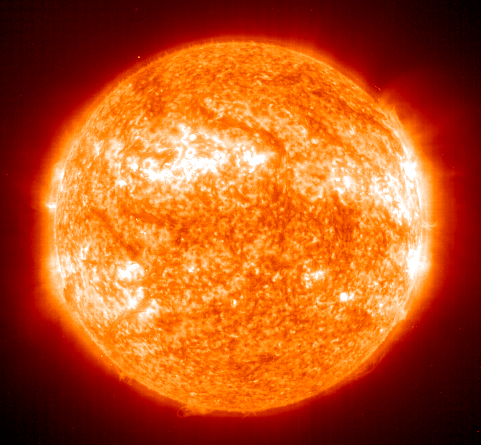
Gravity holds the planets in orbit around the Sun but is the weakest of all the interactions.

The electromagnetic interaction is also responsible for holding molecules together. Although molecules are neutral, there is a residual of the electromagnetic interaction, called van der Waal's interaction, that holds them weakly together. Take hydrogen molecules, for example. The electric charge around the atoms in the molecules is polarised - the electrons are pushed apart by electromagnetic repulsion towards the extremities leaving a positive field near the middle. The molecules are held together by attraction between the negative extremity of one molecule's field and the positive middle of the other's. This is due to a polarization of the electric charge around the atoms in the molecule. For example, in the hydrogen molecule, the electrons are pushed apart by electromagnetic repulsion towards the extremities, leaving a positive field near the middle.

Van der Waal's interaction holds a hydrogen molecule together. The phenomenon is sometimes called the "hydrogen force".
The weak and strong interactions differ from the other two in one very important way: they only act over very short distances and are confined to the scale of atomic nuclei. That means that they are less familiar to us in everyday life, but they are nevertheless very important.
The strong interaction holds quarks together to make protons and neutrons, and a residual strong interaction holds protons and neutrons together to form nuclei - rather like the van der Waal's interaction does for molecules. The charge of the strong interaction is called colour. It comes in three varieties - red, blue, and green - and is carried by quarks. However, all the particles made of quarks are colourless. Protons and neutrons, for example, contain three quarks, one of each colour, and just as with real colours, adding them together gives white. Other particles, called mesons, are made of a quark and an antiquark. Here, the antiquark carries the "complementary" colour, or anticolour, to that of the quark, once again giving white.

The strong interaction binds quarks together in protons and neutrons. Protons and neutrons are in turn held together to form nuclei by a residual of the strong interaction, a phenomenon similar to van der Waal's interaction.
The weak interaction is responsible for radioactive beta decay, and it plays a vital role in the energy generating processes of stars, including our Sun. The weak interaction acts on a kind of "weak charge".

The weak interaction is at play in a star's burning process.
